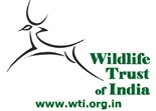ON GROUND ACTIVITY SO FAR
· The teams were ready and on-standby for when the cyclone made landfall.
· Once the cyclone subsided, the teams were able to get to work assessing damage, humanitarian efforts began.
· On the forest department’s request the ERN team was able to access the Balukhand Wildlife Sanctuary – one of the hardest hit areas – and begun assessment and rescue work. The team also assisted the forest department in surveying the areas damaged using aerial surveillance.
· At Balukhand WS, the team assisted the forest department in rescuing and handling Babbler chicks, A bulbul and an adult peacock.
· Snake rescue teams are also in place to minimize human-snake conflict
· Since many trees were uprooted, the team continues to rescue nesting birds in distress via in-situ stabilization, feeding and rehabilitation in temporary holdings, which have been erected to address this emergency need
· As Odisha is a region with many livestock species, stranded livestock will be attempted to be rescued or rehomed. The situation of flooding is over now and hence the efforts will be to subsidize such livestock through fodder support. Health camp to treat the injuries (if any) and to general routine checkup will be undertaken in the coming days in the form of veterinary camps.

EMERGENCY RELIEF NETWORK
Emergencies and calamities come unannounced! For animals trapped it is their most vulnerable moment. To prepare for these situations, the Emergency Relief Network (ERN) was launched by Wildlife Trust of India (WTI) in partnership with the International Fund for Animal Welfare (IFAW). ERN brings together expert and amateur animal rescue workers, rehabilitators and wildlife conservation specialist, including wildlife veterinarians, forest officials, biologists and others, to act, exchange, share and contribute their knowledge and professional skills in the care for animals in crisis and distress. Initiated in the year 2004, it was earlier known as Wildlife Rehabilitators Exchange Network (WREN) and in 2007 was renamed ERN.
IFAW-WTI also uses this network of committed responders to urgently reach wildlife emergencies and disasters reported from different parts of the country.
CYCLONE FANI
A strong and destructive cyclone FANI has hit the coasts of Odisha and is predicted to move towards West Bengal with fearsome wind speeds of over 150 km/h. FANI, the strongest tropical cyclone to make landfall in recent years in India, is predicted to cause major damage. In the path of its destruction, not only humans but also animals will be impacted.
The storm is predicted to move upward in the northeast direction and Bengal will also be affected. The Indian Meteorological department has stated that the severity is likely to come down from being an “extremely severe” to a ‘very severe’ form in the next 6 hours. The cyclone has already weakened since its landfall in the afternoon today.
ERN is gearing up to combat this formidable calamity through its vast network. We appeal if you are in Orissa and an animal care giver join our team. Call Rudra Prasanna Mahapatra on +91 9437575774.
Emergency Relief Network Response
Currently we have ERN team members stationed in different districts of Odisha, West Bengal and Andhra Pradesh to provide us assessments of the on-ground situation. The locations of these teams are shown in the map (figure 1).

Figure 1: Map locations where WTI team and volunteers are stationed
Plan of action
Once the cyclone has subsided, the teams will come up with their assessment reports, based on which IFAW-WTI we will deploy teams of veterinary doctors and trained caregiver for rescue and providing relief.
- Since many trees will be uprooted, nesting bird colonies often get displaced. The team will provide relief to the affected birds in the region through in situ stabilization and feeding. For chicks that require intensive care, temporary holdings would be erected to nurse them.
- Since Odisha is largely rural, people also depend on livestock which will be majorly impacted in the region. Stranded livestock will be rescued and taken to local shelters and fodder and veterinary care would be provided to livestock in relief camps.
- ERN also intends to provide assistance in rehoming of displaced pets through its organizational members
- Other wildlife that may seek shelter in homes and those that may be injured due to force of impact of debris would also be tended to through veterinary assistance. These wild animals, often snakes, that take refuge in households would be captured and released in the nearby areas.
If you are unable to volunteer, do participate in the ground support with a donation to WTI’s Rapid Action Projects (RAP) that makes grants in similar situations including FANI for saving individual animal lives. Act Now
OUR PAST interventions give us experience to confront this challenge:
Floods: Bihar, Assam, Rajasthan, Odisha, Tamil Nadu and Gujarat
Through ERN, IFAW-WTI has provided immediate relief to livestock in flood affected areas to prevent the spread of infectious diseases through immunization and quarantine. The team also provided fodder to livestock stranded in villages that were cut off from the rest.
Tsunami: East Coast of India
During the 2004 tsunami that killed over 10,000 people and several thousand livestock, the ERN team was actively involved in providing relief to animals all along the coast of Tamil Nadu and Andhra Pradesh.
Cyclone: Odisha, Andhra Pradesh and Tamil Nadu
During cyclones, the ERN team provided veterinary and husbandry support to over 13,000 animals.
Man-made disasters: Gujarat and Rajasthan’s Kite-flying festival
ERN vets also helped in treatment and rehabilitation of birds injured during kite flying festival (Makar Sankranti) in Gujarat and Rajasthan. The bird injuries happened due to the glass-coated thread used for flying kites. Affected birds included cranes, pelicans, seagulls, kites, egrets, storks, eagles, ducks, owls, parakeets, pigeons, doves and even crows.









